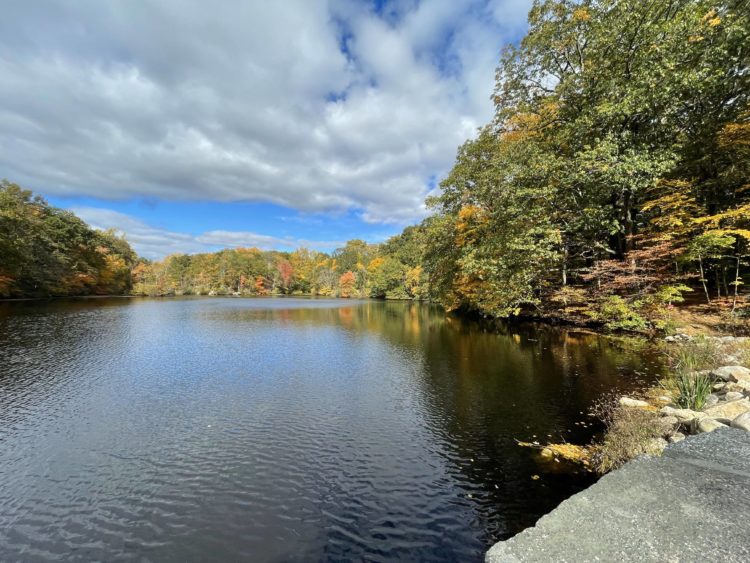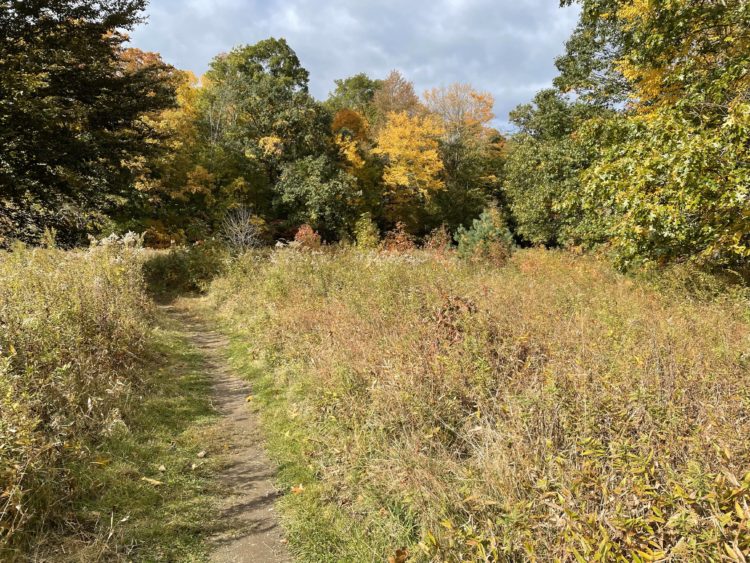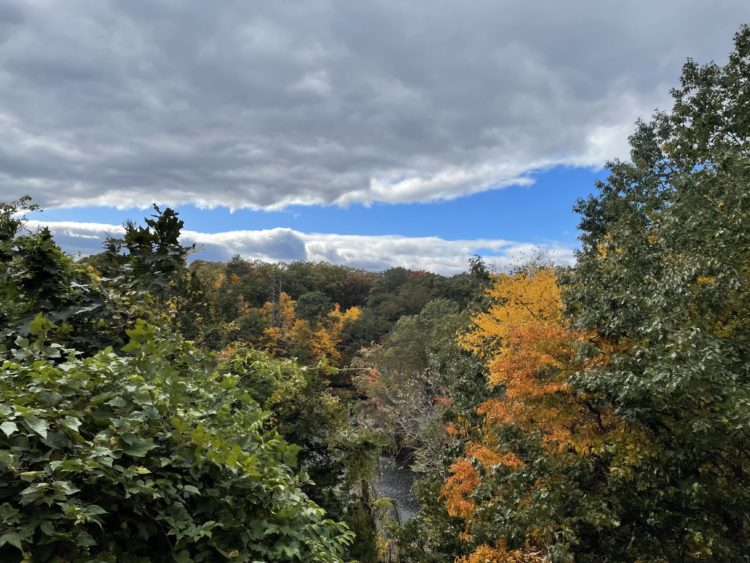
By Anne W. Semmes
One of the natural wonders of the Town of Greenwich is that 107-acre historic public park with its hiking trails through forests, meadows, over brooks, up rocky hills and beside a four-acre pond, connected as it is to another near 90-acres of the Montgomery Pinetum. All this nature bounty a short walking distance from the shopping district of Cos Cob. The Pinetum land was a gift from Col. Robert Montgomery, but the 107-acres were purchased by the town from the Pomerance and Tuchman families.
The history of those 107-acres is remarkable, beginning with naturalist-author Ernest Thompson Seton laying out his Wyndygoul estate, from where he helped establish the Boy Scouts of America and formed the Woodcraft Indians. He also fathered there the distinguished historical fiction writer Anya Seton. But Seton would sell that land in 1912 to financier Maurice Wertheim who would will that land to his three daughters, one of whom married into the Pomerance family, and another became the distinguished historian, Barbara W. Tuchman.
Today, that much beloved 107-acres by nature seekers and dog walkers is experiencing wear and tear, “and other ecological and environmental challenges,” thus the Department of Parks and Recreation wishes to create a Master Plan to address those challenges. And vital to that plan is to “seek input from the community on what they think” needs to be addressed by that Plan. Hence the first public meeting will be hosted next Monday evening, October 30, from 6-8 p.m. in the Town Hall Meeting Room to discuss the Master Plan with staff and the consulting GZA firm.
But before that public meeting residents are urged to take the survey provided online at greenwich parks and recreation survey 2023, to share their input to guide the master planners. Residents have until November 17 to give their (anonymous) responses.
“Since the pandemic, there was an increase in use of the Tuchman and Pomerance properties,” shares Nancy Chapin, “And as a result, a bit of degradation of the properties.”
Chapin’s family has grown up next to the properties since they were owned by the Wertheim family. And from 2001 to 2007 when the Town purchased the Pomerance and then the Tuchman properties, she tells of a planning committee formed by First Selectman Lolly Prince with recommendations not fully followed through. So, Chapin and husband Andy, a noted land steward, had formed “a small ad hoc group, the Friends of the PPT (Pomerance Tuchman Pinetum).” That group included members of both Parks and Rec and the Conservation Commission.
“We’ve worked with 14 Eagle Scouts,” says Andy Chapin, “clearing the trails with help from the GRTA.” “Working also with Sarah Coccaro, (now assistant director of environmental affairs for the Town),” Nancy Chapin tells, “We literally hiked every single trail and deer path on the property with volunteer Fred Wu creating a map using the town’s GIS mapping system.”
What Chapin hopes comes out of the survey and 2023 Master Plan is a name for this “tri-park” that she says former Tree Warden Bruce Spaman had called it, as the properties are “crying out for a name that might reflect their historic value.” She shares what was the first name given to the Pinetum of “Wild Acres.” “If you look at the Montgomery Lane entrance to the Pinetum you’ll see it designated ‘Wild Acres.’” Whether that name will be re-considered, she hopes a new title will incorporate “Preserve.”
But what is most paramount with these 107-acres, says Chapin, is “the need for habitat restoration. The properties have become overrun with invasive plants, vines, et cetera, including the invasive Spotted Lanternfly.”
Andy Chapin adds his concerns. “With a lot of use by people, how can we improve the trail system? And there’s old infrastructure historic in value – bridges and a sunken garden from the Wertheim family, stonework along the pond. And all of this is degrading.”
“And Sarah Coccaro has explored the feasibility with the Conservation Commission of adding a fish ladder at the dam,” adds Nancy Chapin. “It would be incorporated into the dam under the bridge [by the pond] using the existing watercourse that is part of the Strickland Brook,” explains Coccaro. But having explored the concept with a DEEP biologist, she tells, they found the idea “a little challenging” with Cos Cob’s flood issues.

Nancy Chapin addresses that flooding in Cos Cob citing the importance of the properties as being “a part of a greenway and a watercourse. So, without a doubt, this property is considered a flood abatement. It acts like a sponge because of the nature of the property.” She recalls when her group was working to convince the town to purchase the properties. “One of the primary reasons was,” she tells, “were it to be developed it would’ve exacerbated and contributed to the flooding issue that goes on now in Cos Cob.”
And then there is that lesser known but impressive meadow located beside the Tuchman property with a path running through it. “There’s huge value in the meadow,” says Nancy Chapin, “And we think it’s important to restore and maintain that meadow and establish a mowing policy. The Audubon has identified that whole Tuchman meadow as an important bird area.” “There are not that many meadows in town,” adds Andy Chapin, “and it’s also a hillside meadow.”
“What we want to do,” sums up Andy Chapin, “is preserve what we’ve got and hopefully start some public-private partnerships to get some people interested in restoring things like that sunken garden. It may not be something the town would take on by itself.”
With a Master Plan there’s the importance of stakeholders, starting with the years long presence of Abilis, with half a dozen “high-functioning residents” living up the road in the park in the former Pomerance modern house built by architect Ralph Pomerance, tells Nancy Chapin. “It’s one of the dollar-a-year leases to Abilis where they pay for the upkeep.” And surely add the Greenwich Historical Society. But the front-runner she states is “obviously the Boy Scouts.”
That Seton era Medicine Rock discovery came with an Eagle Scout project. And now that Medicine Rock, not far from the park entrance, is known to be situated where Seton would gather his Woodcraft Indians, overlooking the pond. But a mystery still lingers with that small round stone structure that first greets walkers. “We just fondly refer to it as a Hobbit House,” tells Nancy Chapin, “Because it has a rounded roof that is completely moss-covered and reminiscent of JRR Tolkien’s hobbit houses.”







